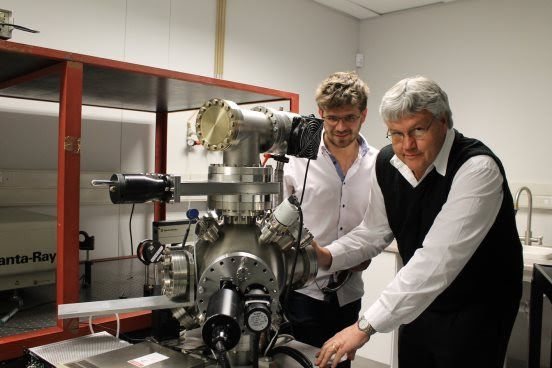
Top stories




LegalTsotsi star’s house, bought with lottery funds, frozen by Special Tribunal
Raymond Joseph 21 hours


More news



The study is currently on-going, and UFS is experimenting and testing different materials in order to optimise the device in the laboratory. It then needs to be upscaled in order to test it in the field.
The two universities entered into an agreement recently for this research into electricity generation. The research is driven by the University of the Free State and was prompted by ever-rising electricity prices and growing demand for electricity production.
Professor Hendrik Swart, senior professor in the Department of Physics at the University of the Free State and SARChI chair (South African Research Chairs Initiative) in Solid State Luminescent and Advanced Materials, says: "An innovation like this which can help to replace traditional means of carbon-based fuel for power generation in our daily lives would be hugely welcome."
Swart explains the main objective of the research: "The idea is to develop glass that is transparent to visible light, just like the glass you find in the windows of buildings, motor vehicles and mobile electronic devices. However, by incorporating the right phosphor materials inside the glass, the light from the sun that is invisible to the human eye (ultraviolet and infrared light) can be collected, converted and concentrated to the sides of the glass panel where solar panels can be mounted.
"This invisible light can then be used to generate electricity to power buildings, vehicles and electronic devices. The goal is therefore to create a type of transparent solar panel."
Swart says this technology can be implemented in the building environment to meet the energy demands of the people inside the buildings. "The technology is also good news for the 4.7 billion cell phone users in the world, as it can be implemented in the screens of cell phones, where the sun or the ambient light of a room can be used to power the device without affecting its appearance."
Another possible application is in electric cars, where the windows can be used to help power the vehicle.
Lucas Erasmus who is working with Professor Swart adds: "We are also looking at implementing this idea into hard, durable plastics that can act as a replacement for zinc roofs. This will allow visible diffused light to enter the housing and the invisible light can then be used to generate electricity. The device also concentrates the light from a large area to the small area on the sides where the solar panels are placed; therefore, reducing the number of solar panels needed and in return, reducing the cost."